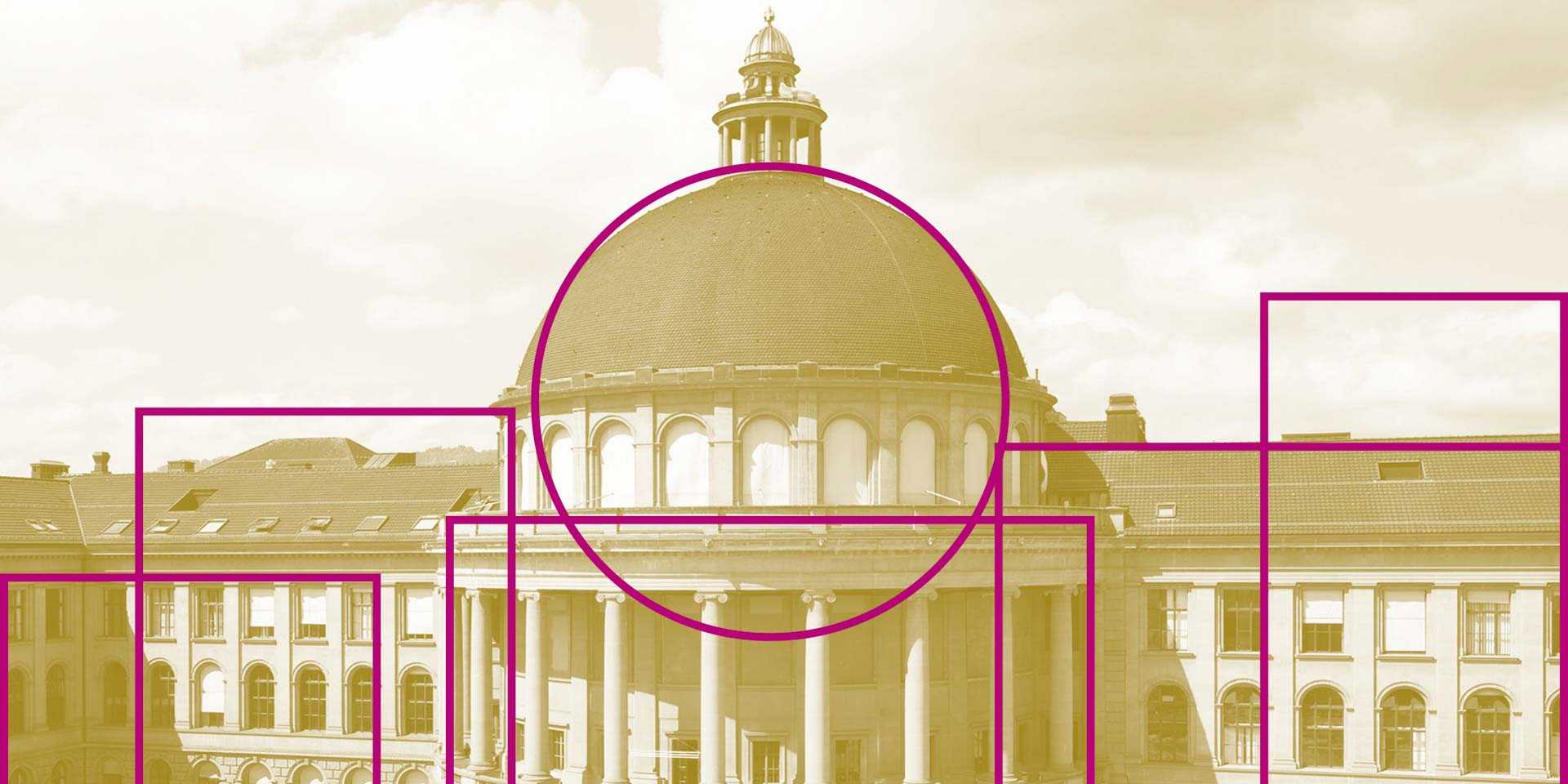ETH Zurich is a place of innovation – not only in research, but increasingly also in the way we develop and operate our campus. The program “Digital Twin – Building Bridges to the future” aims to create a digital twin of ETH's entire campus infrastructure by the end of 2028. This will lay the foundation for a future-proof campus that will secure the framework for ETH Zurich's excellent research and teaching.

The “Digital Twin” program is a large-scale infrastructure project of the Vice-Presidency for Infrastructure and Sustainability (VPIN). The aim is to further develop the ETH campus by creating a digital twin of the entire ETH building and facilities portfolio, including existing and new buildings and their infrastructure.
The digital twin lays the foundation for a future-proof campus: it provides continuous access to data to enable quick and informed decision-making, and promotes sustainability and efficiency by making it possible to measure and control the use of resources. For example, in the future, buildings can be cleaned even more specifically with the help of the digital twin based on occupancy data, data-driven construction projects can be carried out more efficiently, and energy consumption can be easily predicted and adjusted accordingly.
The introduction of the Digital Twin of the ETH infrastructure is a decisive step towards a data-driven organisation and a future-oriented, resource-conscious campus development.

“With the “Digital Twin” program, we are taking a big step into the future: we will be able to manage construction projects more efficiently, use resources more sustainably and make data-based decisions for the campus of the future.”Ulrich Weidmann, Vice President for Infrastructure and Sustainability (VPIN)
The success of the digital twin will lie in the combination of technology and organisational transformation. A central goal of the program is to create a deep understanding of the value of accurate and timely data throughout the organisation. In addition to a robust IT architecture, a data culture is needed in which accurate and up-to-date information is recognised as a valuable resource.
Program manager Nina Indina, who is also responsible for strategic projects and innovation in the Engineering and Systems department, is looking ahead with motivation: “The program is not a purely technological innovation – it not only links data, but above all brings together people and perspectives that together shape the future of the ETH campus. I look forward to implementing this change with a dedicated team and many subject matter experts. With the Digital Twin, we are building more than just bridges between units. We build bridges to the future.”
Development of the Digital Twin
Four interdisciplinary projects are working closely together to develop the Digital Twin of ETH Zurich.
Each project addresses a central aspect of a building's entire life cycle. Together, they cover all phases – from planning, construction and commissioning to operation and possible repurposing. They enable precise data management, seamless collaboration and the digital enhancement of existing facilities, thus creating the basis for an innovative and sustainable future at ETH Zurich.

How long does the program need to develop the digital twin?
The program aims to create a future-proof, highly integrated and scalable architecture by the end of 2028, and to establish a data-based work culture that meets the long-term requirements of sustainable campus development at ETH Zurich.
To this end, a first beta version of the Digital Twin is to be tested in 2027, so that the Digital Twin can be transferred into operational use by the end of 2028.
The milestones from 2025 to 2028 provide an orientation. The level of detail in the later phases remains very low to allow flexibility for necessary adjustments.

Up-to-date and detailed information can also be found on the program's website:
Digital Twin – We build bridges to the future
Note on the translation
This text has been translated for your convenience using a machine translation tool. Although reasonable efforts have been made to provide an accurate translation, it may not be perfect. If in doubt, please refer to the German version.
Should you come upon significant translation mistakes, please send a short message to intern-aktuell-news@hk.ethz.ch so that we can correct them. Thank you very much.
Always up to date
Would you like to always receive the most important internal information and news from ETH Zurich? Then subscribe to the "internal news" newsletter and visit Staffnet, the information portal for ETH employees.
Comments
No comments yet